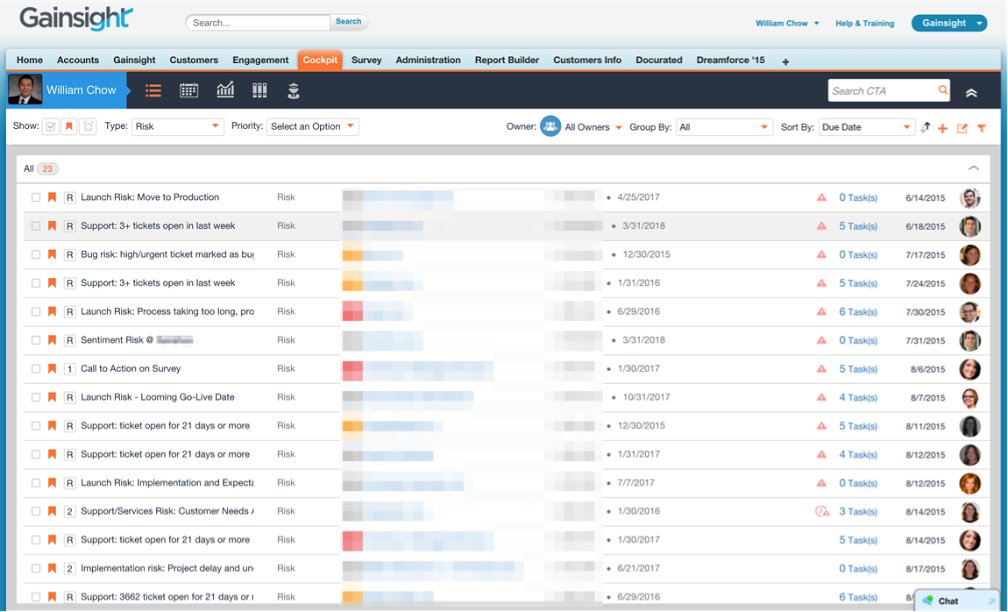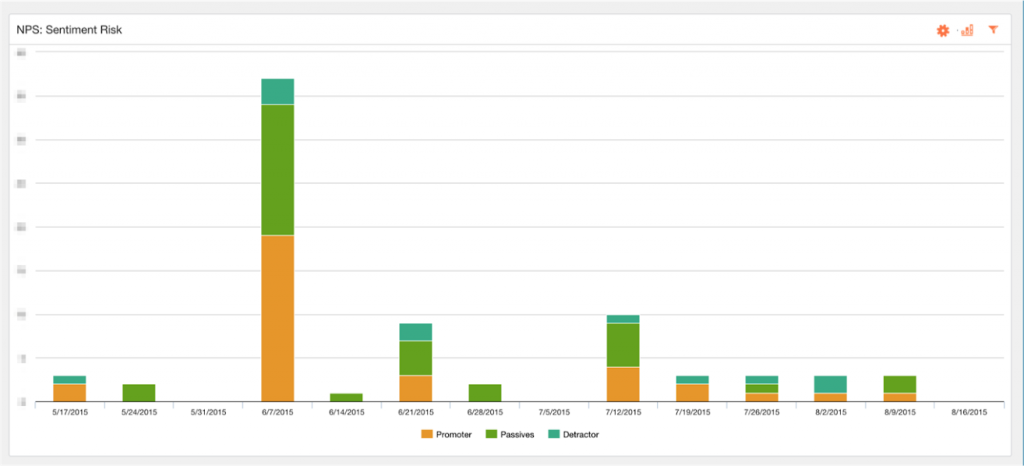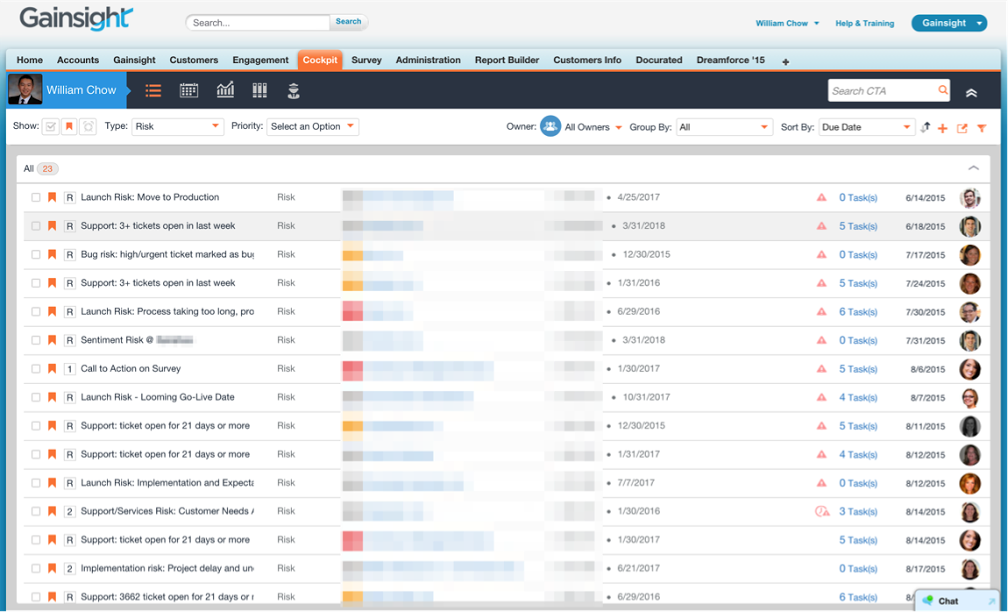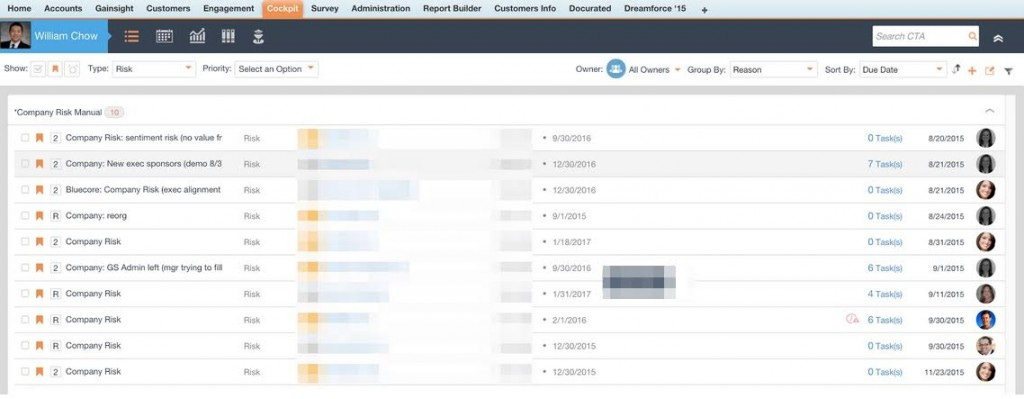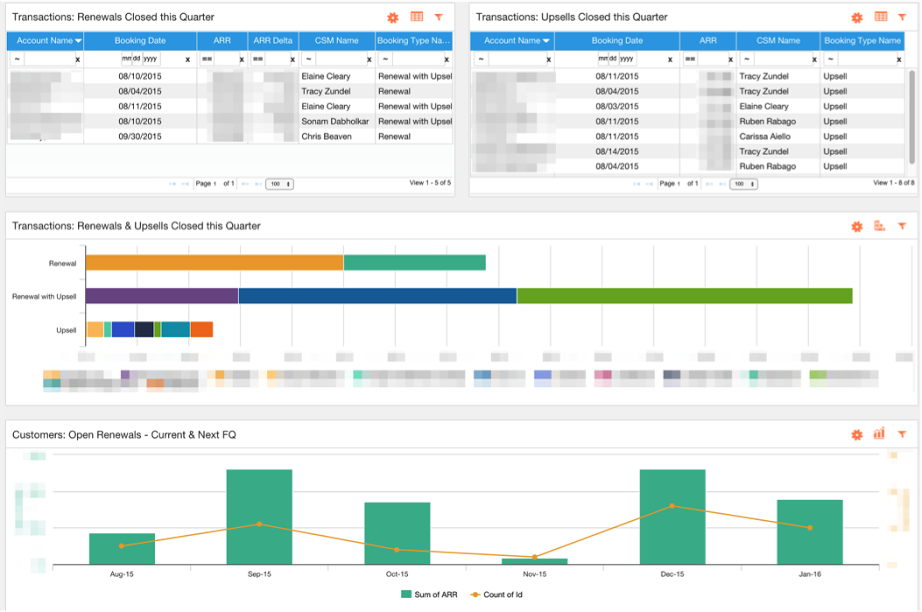How to Transform Your CSM Operation: Smart Processes
August 24, 2015
The goal of our Customer Success team at Gainsight is to help you transform your CSM operation. Here’s our view of how that transformation happens:
Note that a “process” is the critical unit in the transformation: it’s the solution for tackling a given business challenge.That’s why our Gainsight CSM team focuses on helping you design effective processes within Gainsight.
What’s a process? An effective one often has the following elements:
Pain point: There is a pain point (i.e. business challenge) that you’re trying to solve.
Objective: There is a clear definition of success in alleviating that pain, and a corresponding metric to indicate the degree of success.
Roles of key participants (including the CSM and members of other departments) are clear via a RACI.
R: Responsible,
A: Accountable,
C: Consulted, or
I: Informed
Project plan of steps exists to guide each participant in executing their responsibilities, thereby reinforcing the RACI.
Reminders to each participant reinforce that division of responsibilities, making sure everyone participates in the right way.
Meeting (optional but often beneficial): There is a regular meeting amongst the participants to work through the designated steps. If there’s a meeting on the calendar, then the work gets done!
Evaluation: Performance of the participants is evaluated based on attainment of the metrics above.
Escalation: There is a way to involve senior management in addressing any major problems that arise.
Gainsight provides a platform for you to build smart processes. Below is a checklist of common CSM business challenges and the processes that can address them.
Which challenges are familiar to you? Have you built processes for them within Gainsight? If not, then contact your CSM.
Note the critical role of the Customer Success Operations Manager in designing these processes. Learn more about that role here.
If you have questions about how to create these processes in Gainsight, feel free to reach out to your Gainsight CSM. You can also follow Allison’s blog posts on Twitter at @PickensAllison.
AUGUST 31, 2015
VPs of Customer Success: Here’s How I Run the Team
Allison Pickens is VP of Customer Success & Business Operations at Gainsight
Note to Gainsight Customers: This post contains links to Vault Assets you can import directly into Gainsight.
There’s nothing worse than waking up on Monday morning and feeling disorganized. Here’s how I get a handle on our business.
One note: All dashboards in this blog post have been sanitized to protect our customers’ confidentiality. Don’t worry, this isn’t real data ☺
MONDAY
Our weekly leadership team meeting is at 8am on Monday morning. During that meeting, we spend 30 minutes discussing the most important risks in our customer base.
To do that, we create a filtered view of Cockpit that covers only Flagged Risk Calls to Action (CTAs) for customers that surpass a certain ARR threshold. Check out my earlier blog posts on how we use risk CTAs and how we handle escalations in order to understand how we arrive at this filtered set of “top risks.” Here are the basics:
We trigger 8 different categories of risk CTAs
Each category is owned by a particular executive on our leadership team – i.e. they are accountable for resolving risks in that category.
CSMs click on the flag icon on CTAs in order to escalate them – i.e. to signal that this is a risk that needs greater attention
We review Flagged Risk CTAs for large accounts in our leadership team meeting
This meeting is the perfect forum for our CEO and myself to ensure we’re aligned with other department heads on the right way to address important customer challenges. Here’s the Cockpit view:
In the screenshot above, you’ll see examples such as Support Risk (owned by our head of Support) and Launch Risk (owned by our head of Services, who runs the onboarding team). For each CTA, our CEO turns to the department head responsible for that risk area and initiates a discussion about what we’re doing to resolve that risk.
Preparation for this meeting: Our Customer Success Operations lead sends an email to each department head, reminding them to prepare to discuss the risks in their area. She also joins the relevant portion of our leadership team meeting to help moderate the discussion.
TUESDAY
Our CSM team meeting is on Tuesdays. We spend most of the time discussing new initiatives – we’re always innovating! – but we’ll kick off the meeting by discussing our CSM “State of the Union” dashboard. The goal is to cultivate a common understanding of how we’re doing as a team.
As I described in this post blog on Scorecards ,
our CSM team is responsible for 3 Scorecard Measures:
Habits
Sentiment
Company
Habits refers to the degree to which the customer is adopting the product in a way that signals they are deriving value. We don’t just care that customers are logging in – we want them to use certain features in the product that correlate with a high return on investment from using Gainsight.
Sentiment refers to the degree to which the customer is happy. This scorecard is based primarily on Net Promoter Score (NPS).
Our Company scorecard measure signals the degree to which the company environment enables the customer to derive strong value from Gainsight. If an executive leaves the company, or if there’s a re-organization effort underway, that can affect the company’s strategy for using Gainsight. We’ll want to re-align with the customer on the right strategy in those circumstances.
Therefore, we review the following dashboards:
1. Habits scorecard measure over time
We want to increase the percentage of customers showing “Green Habits.” Using the dashboard below, we’ll explore the number of customers who moved from Yellow to Green or Red to Yellow last week, as well as the number of customers who moved in the opposite direction.
We’ll click on the bars in order to see which customers moved, and which CSMs were responsible.
This is a great opportunity to give “kudos” to the CSMs who have helped their customers adopt the product more fully. We talk about risks so often in customer success; it’s important to celebrate our victories, too!
2. Newly received Net Promoter Ratings
We conduct a monthly NPS survey (sent to a different subset of our customer base each time), and we typically receive new responses weekly.
We’ll click on the bars to see the specific customers that submitted ratings last week. This is a second opportunity to offer kudos, recognizing CSMs who received promoter scores.
We review Company Risk CTAs in our Friday team meeting. I’ll return to that below.
Preparation for this meeting: I review the dashboards in advance, as well as prepare for discussions on process improvements.
WEDNESDAY
On Wednesdays I have a weekly meeting on upcoming Renewals, Potential Opt-outs, and Upsells with the CSMs and our new Renewals & Expansion Manager. We discuss our forecast and brainstorm together about any challenging renewals.
Preparation for this meeting: I ask our Renewals &
Expansion Manager, who owns those CTAs, to post Chatter updates to the Renewals and Upsell CTAs about the next steps.
THURSDAY
On Thursdays I have 1:1s with the team leaders. We review 2 dashboards:
1. Habits dashboard for their team
The following chart shows our Habits scorecard measure for each customer segment, week-over-week (although as noted above, we’ve sanitized the data for the sake of confidentiality).
I’ll ask questions such as:
What factors are making your Green customers successful?
What factors are making your Red customers unsuccessful?
What are some holistic (rather than one-time) solutions to moving more customers into Green? What process improvements can we make?
Which customers are most likely to move into Green, with some additional effort?
2. Flagged CTAs in Cockpit
The team leader may need help in resolving certain Flagged CTAs with his/her team members. We’ll discuss those, agree on an action plan, and post the next steps to the Chatter feed on the CTA.
Preparation required: Each team leader reminds their team members to confirm the accuracy of their scorecards and update certain CTAs if needed. Recall that our scorecard measures are linked to CTAs, so the CSM will need to open, close, or flag CTAs in order to update the scorecards to ensure they reflect the customer’s situation.
FRIDAY
On Fridays we have another CSM team meeting, to brainstorm as a group about particular customer situations. We’ll look at a filtered view of Cockpit for that meeting as well. In the future, as our team grows, we’ll likely split this meeting into several – one for each customer segment.
COMPANY RISK:
BAD HABITS RISK:
SENTIMENT RISK:
Preparation required: CSMs review their Flagged CTAs and choose any that they’d like to discuss during the team meeting.
SUNDAY
On Sundays, I prepare for the week ahead by reviewing closed renewals and upsells, as well as the above-mentioned State of the Union dashboard, since I’ll share this during our Monday leadership team meeting and our Tuesday CSM team meeting.
If you have questions about how to create these dashboards, feel free to reach out to your Gainsight CSM or to Allison at apickens@gainsight.com. You can also follow Allison’s blog posts on Twitter at @PickensAllison.
Vault Assets mentioned in this post
(for Gainsight customers only)
Here are ready-to-use versions of what you’ve seen in this post:




